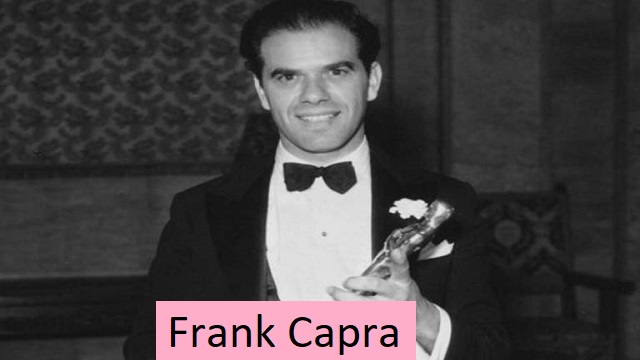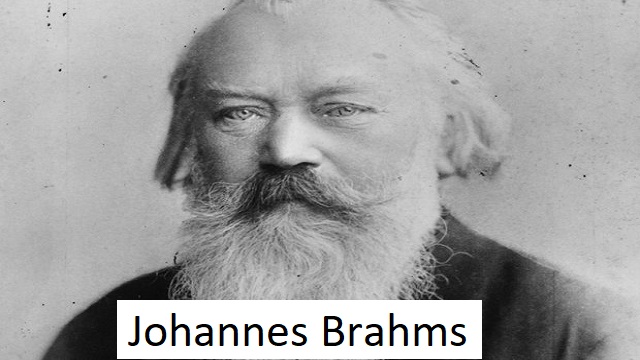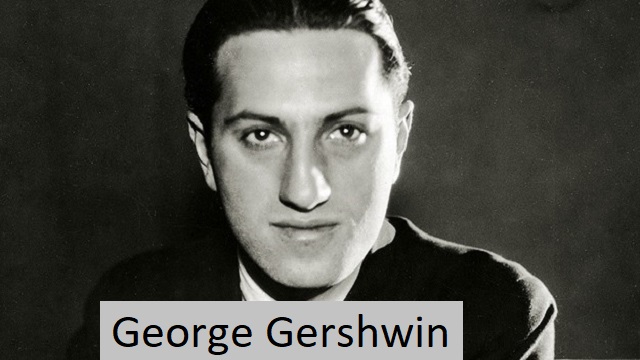Franck Capra, named after Francesco Rosario Capra (born May 18, 1897 near Palermo, Sicily, Italy; died September 3, 1991, La Quinta, California, USA), the foremost of the 1930s An American director who he was an accomplished director, during which time he won three Academy Awards for Best Director. Many of his best-loved films were made during the Great Depression and were sentimental patriotic celebrations of the righteous who selflessly spoke truth to power in pursuit of the common good.

Early life and work
Capra’s family immigrated to Los Angeles from Bisacchino, a Sicilian village, when he was six years old. After earning a degree in chemical engineering from the California Institute of Technology in 1918, Capra received a commission in the Reserve Officers’ Training Corps and spent the final During World War I, I was teaching math in the US Army. Two years later he traveled, worked odd jobs, and worked as a bookseller. In 1922, although he had no filmmaking experience, he persuaded a San Francisco stage actor who wanted to make a film based on the poem to hire him to direct a one-reel production of the Fisher’s Boarding House. Capra then got a job at a San Francisco film studio and started learning filmmaking from scratch, working as a film cutter, camera assistant, property man, writer and assistant director. Hal Roach’s 1924 comedy in his series Our Gang continued the wrathful writer’s work. Capra moved to Mack Sennett’s Keystone Company and directed Harry Langdon in some of the silent comedian’s most successful films.
After a notable debut as Claudette Colbert in Studio First National in 1928, For the Love of Mike (1927), Capra teamed up with Columbia Pictures and its director, Harry Cohn, and cinematographer Joseph Walker began a long-term relationship. . Colombia, one of the so-called poverty studios, did not have the reputation of big studios such as financial resources, famous contractual actor and Metro-Goldwin-Myer (MGM), Paramount and Warner Brothers. During his first year in Colombia, Capra led seven quiet properties, mainly in the budget of the film B: melodrama of this thing; So is love?, A comedy on boxing; The morning statue, a romantic comedy, is part of the tasks of the stress Capra between the large city values and the small town; The route of forts, a crime melodrama; Tell the sands, a melodrama with Francis X. Bushman; Submarine, a big budget action film (for Colombia). and The Power of the Press stars Douglas Fairbanks, Jr., as a journalist seeking justice.
As the studio entered the sound era, Capra became Korn’s most trusted director. The Younger Generation (1929) was a part-sound drama about a man who leaves his family in New York’s Lower East Side to find a good life on Park Avenue. Capra’s first all-talkie crime comedy was The Donovan Affair (1929). Flight (also released in 1929) was notable for Capra’s insistence on staging and filming all of its aerial action without special effects or special effects.
Early 30s
Ladies of Leisure (1930) is Capra’s first film with Barbara Stanwyck. He embodies a gold digger reformed by his love for a sensitive painter. When Capra adapted the Broadway version for Rain or Shine in 1930, he kept comedian Joe Cook as the circus lifeguard but dropped the show’s music. Capra’s next film was the ambitious Dirigible (1931), an expensive aerial adventure set in Antarctica. Stanwyck next appeared again in The Miracle Woman (1931), a thinly disguised meditation on evangelist Aimee Semple McPherson. The playwright Robert Riskin, who would become Capra’s most important collaborator, was one of the authors of Platinum Blonde (1931). Jean Harlow and Loretta Young starred in this comedy of manners, which owed much to Lewis Milestone’s The Front Page (1931) and foreshadowed the romances between women journalists and common men that would follow Capra-Riskin’s later films. Meet John Doe. Forbidden (1932) finds Stanwyck once again a victim of a cruel fate. This time, she is forced to commit murder as a woman in love with a married man. In “American Her Madness” (1932), a kindly bank president (played by Walter Huston) tries to stem the tide of panicked customers rushing to his ailing financial institution. The story written by Riskin was reused by Capra over a decade later in It’s a Wonderful Life. The theme of “little people against big heartless corporations” has become a hallmark of Capra’s best-known works. General Jen’s Bitter Car (1933) was Capra’s most erotic work. Stanwyck served as a missionary in civil war-torn Shanghai. She becomes the embarrassed guest of a Chinese warlord (Nils Asther), who has fallen madly in love with her. Joseph Walker’s lush, intoxicating cinematography in Bitterness is a rarity in the Capra films, instead reminiscent of the work of director Joseph von Sternberg.
Bitterness was not a commercial success, but Capra’s next film, Emotionally Ready for a Day (1933), was. Capra produced and directed Riskin’s adaptation of Damon Runyon’s short story Madame La Gimp. It was about Apple Annie (May Robson), a peddler who hires a sympathetic mobster (Warren Williams) to turn her into a society wife so her daughter (Jane Parker) won’t be embarrassed by her status. He is coming to visit Europe with his fiancee and future wife. “One Day Lady”, a charming comedy with impressive results, was nominated for the Academy Award for Best Picture. Capra, who was also nominated Best Director, remade the material in 1961 with less success as Pocketful of Miracles.
The Golden Age of Frank Capra
Capra’s “Golden Age” began with It Happened One Night (1934), the first film to win Academy Awards in the five main categories: Best Picture, Best Actor, Best Actress, Best Director, and Best Adapted Screenplay. Making this enduring romantic comedy about a runaway heiress (Claudette Colbert) and the ruthless reporter (Clark Gable) who finds and falls in love with her has become a familiar Hollywood tradition. As one of MGM’s biggest contract stars, Gable was sent away from the studio to work on a low-budget production for Columbia as punishment. Colbert was on loan at Paramount. Their performance chemistry was electric and led to one of the most iconic films of the 1930s.
Capra’s second act of 1934, the Heartbreaking Broadway Poster, was less noteworthy than It Happened One Night but not unimportant. A businessman played by Warner Baxter, encouraged by his sister-in-law turned lover Myrna Loy, quits his job in an attempt to turn a lame racehorse into a winner.
After suffering from his life-threatening undiagnosed ruptured appendix, Capra returned to the screen in 1936. Does Goes to Town, one of the three or four films with which he was most closely associated. A smash hit. Riskin’s adaptation of Clarence Boddington Kelland’s story, Mr. Deeds is a populist tale of David versus Goliath. Gary Cooper starred as Longfellow Deeds, a principled writer playing tuba greeting card sentiments from small-town Vermont who inherits his uncle’s $20 million estate and moves to New York to manage it . When Karma decides to give money to the less fortunate, her sanity is called into question. Jean Arthur plays a tough reporter who is initially suspicious of Deeds’ motives, but falls in love with him when she realizes his sincerity. Capra is nominated for Best Picture. The Deeds earned him his second Academy Award for Best Director.
Capra then took a year, shot enough footage to make 12 feature films, and spent $2 million (Columbia’s biggest budget ever) on Lost Horizon (1937). Riskin’s adaptation of James Hilton’s 1933 novel of the same name, the film stars Ronald Colman as a British diplomat who finds his way to Shangri-La, a hidden utopia after a plane crash. He and his fellow travelers (including Thomas Mitchell, John Howard, and Edward Everett Horton) are entertained by the mysterious Chapter (H.B. Warner), the sympathetic Sondra (Jane Wyatt), and the dying High Lama (Sam Jaffe). A diplomat to take his place. Despite Lost Horizon’s stunning settings and allegorical power, many viewers were jaded by its studied earnestness, lack of action, and determined pacing (Korn was Capra’s Even after cutting the three-and-a-half-hour preview version of the film to almost two hours)-hour of operation). It takes years and has to be re-released several times before the film finally pays off. You Can’t Take It With You (1938), a frenzied comedy shot in less than two months, was a dramatic turn for Capra after heavyweight Lost Horizon. George S. A Broadway hit, the Pulitzer Prize-winning play by Kaufman and Moss Hart has been adapted for the screen by Riskin. Arthur, James Stewart, Lionel Barrymore and Edward Arnold star in this whimsical portrait of a wildly unconventional family. While some critics found the film merely professional in its professional polish, others felt Capra deftly captured the work’s inspired madness. The film won the Academy Award for Best Picture and Capra, who received his third Best Director award and then received $100,000 per picture, landed on the cover of the August 8, 1938 issue of Time Magazine and stated that he was ” acclaimed “the best director in his line of work”. Capra was already President of the Academy of Motion Picture Arts and Sciences when he was elected head of the newly formed Guild of Motion Picture Directors, and played a key role in negotiating an agreement in 1939 between the studios and the guild. Columbia gave Capra an unusual degree of freedom (something the larger studios couldn’t have) as a producer and director, overseeing his own production unit within the studio. Believing that directors should be responsible for all aspects of their projects, Capra embraced the “one person, one film” principle, and as leader of a guild and a major player in the film industry, Capra was given the opportunity to work with other directors Freedom. Capra’s deep belief in the importance of individual representation is as much a hallmark of his film characters as it is his filmic credentials. In the mid-to-late 1930s, his films were generally similar in their satirical portrayal of naive, idealistic, and courageous heroes. These films exuded an inherent optimism as their underdog heroes triumphed over intelligent but selfish individuals in a world often mired in darkness and despair.
Some critics dismissed the Capra films of the time as expressing a utopianism unimaginably detached from reality. Others have argued that Kapler did not deny that, wherever the irony lies, political power is usually in the hands of a few, but instead may result from the strong-willed exercise of moral violence. Tried to portray a fairer world than ever. Many studios point out that Coupler’s public assertion of individual freedom was accompanied by a deep distrust of public society and politics, but the triumph of “little people” (often in groups) in his films evokes a simple or unifying identification. point out that it caused politician. Ignore it. ideology. Capra’s celebration of the strength of the American character is very clear, but it can be seen as patriotic and militant because it embraces American exceptionalism. Just like they did during the Great Depression, the US presidential administration is coming. Franklin D. Roosevelt sought a new reversal of the latter, the idealistic work of Capra, supported by the political right, left, and center. The mixture of patriotism, idealism and sentimentality found in Capra’s most famous films is often called “Capracorn” (even by the director himself), but over time it became known as “Caprask”. It is drawn in a more positive way.
Mr. Smith Goes to Washington (1939), one of the director’s more capricious films, was the story of a newly minted senator from Montana who jeopardizes his career to stamp out the corruption of the hound dogs in the United States Senate. Jefferson Smith (James Stewart), more aptly named Longfellow Deeds, is the quintessential Capra Everyman who refuses to compromise his ethics in the face of intense pressure from greedy and amoral rulers. A man sold out to the political machine. Stewart gave one of his most memorable performances, solidifying his on-screen persona as the embodiment of honesty and decency. This is what Gary Cooper (in fact, Capra’s first choice for the role of Jefferson Smith) did in Mr. Days.






